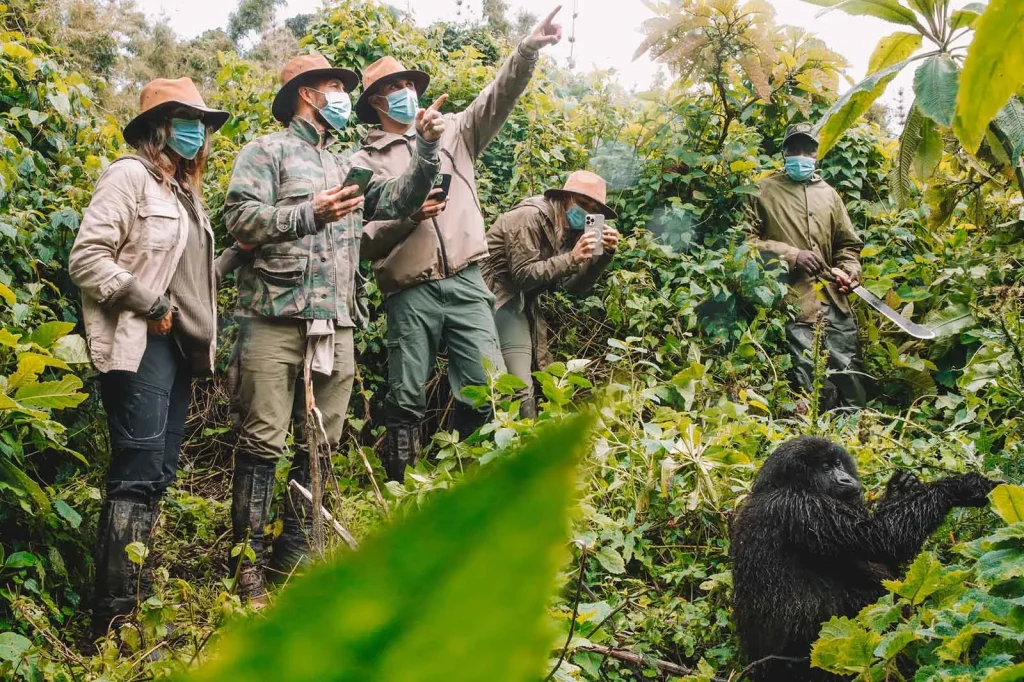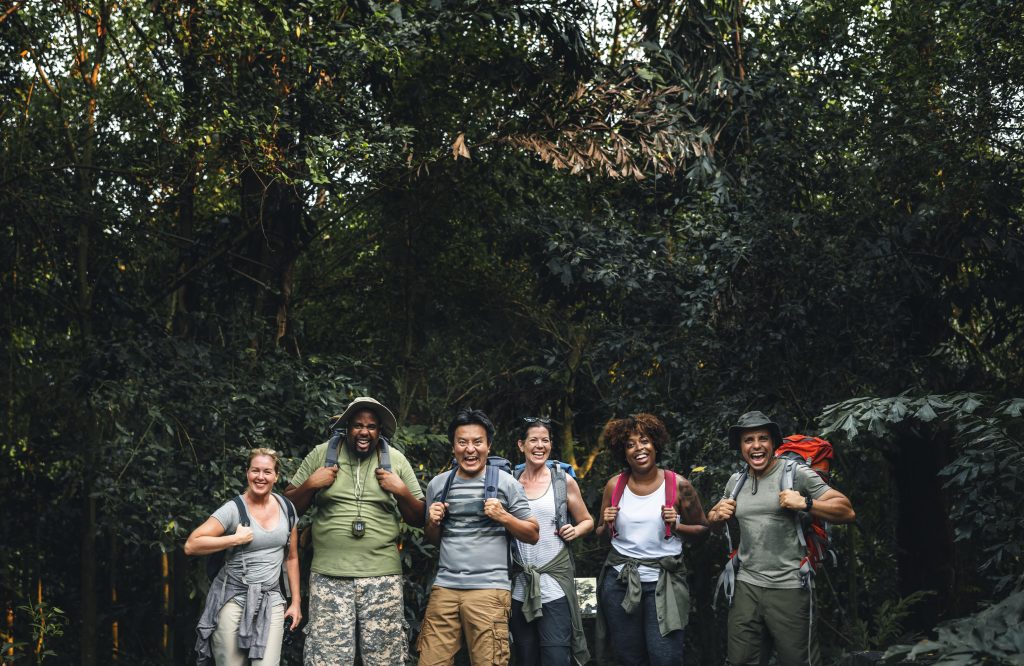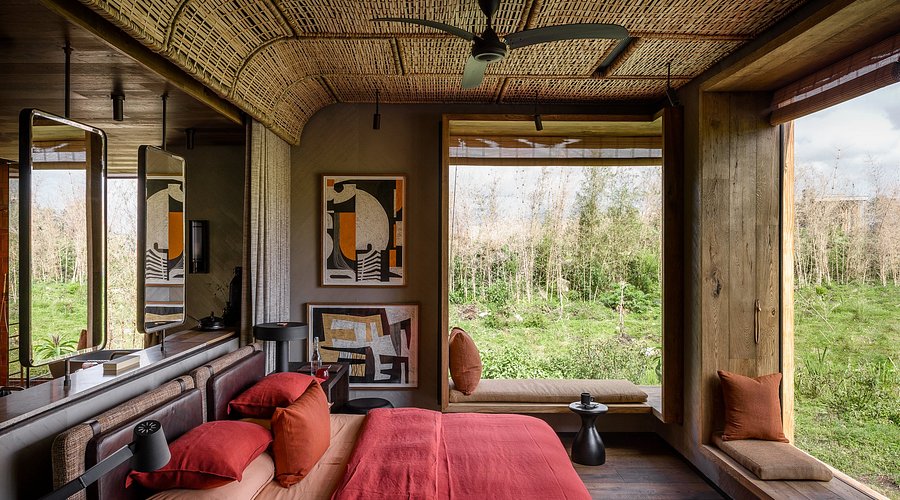Gorilla trekking remains one of Rwanda’s most regulated and sought-after wildlife experiences, regardless of cost.
Each year, visitors from around the world arrive intending to observe mountain gorillas within the protected zones of Volcanoes National Park.
This form of tourism operates under a controlled system designed to balance visitor access with habitat preservation and species protection. Regulatory frameworks, visitor limits, and conservation-driven guidelines shape every aspect of the trekking experience.
Understanding the full financial commitment required for gorilla trekking in Rwanda forms an essential part of responsible trip planning.
The total cost extends beyond the visible headline fees and reflects a layered structure built around permit access, operational logistics, and conservation funding.
If you intend to participate in this activity, evaluating the cost in advance will help align your expectations with both your budget and the operational realities on the ground.
Gorilla Trekking Permit Cost in Rwanda
The Rwanda Development Board (RDB) regulates all gorilla trekking permits within the country.
As of 2025, the official permit fee stands at USD 1,500 per person, per trek. This rate applies consistently to international tourists, foreign residents, and nationals of Rwanda and other East African Community (EAC) countries.
Rwanda’s pricing policy for gorilla permits has remained stable since it was revised in 2017, giving the tourism sector a clear and predictable framework for trip planning.
The fee structure reflects Rwanda’s long-term strategy for managing gorilla tourism at sustainable levels.
Limiting daily visitor numbers through a high-value permit system reduces ecological pressure on the habituated gorilla groups while ensuring sufficient revenue to fund conservation operations and park management.
This approach aligns with global best practices for wildlife tourism in ecologically sensitive areas.
Moreover, it allows Rwanda to channel resources into community outreach, ranger training, and habitat monitoring.
By securing a permit, you take on the role of a direct contributor to mountain gorilla conservation in the Virunga Massif. The permit represents more than access; it forms part of a targeted effort to balance visitor interest with species protection.
Understanding this financial model will help you approach your trek with full awareness of its conservation context.
What the Permit Fee Covers
Your gorilla trekking permit fee in Rwanda grants more than park entry. It also secures several critical services and conservation support mechanisms that make each trek possible under protected and monitored conditions.
Below is a detailed explanation of what this fee includes.
Gorilla Group Allocation and Trek Coordination
Before each trek, park authorities allocate visitors to specific gorilla groups based on group size, trekking difficulty preference, and gorilla location data from the previous day.
This coordination process involves logistical planning and the daily deployment of tracking teams who locate the assigned gorilla family in advance.
Without this coordinated system, visitor flow and group distribution would remain unmanaged, increasing ecological strain on the habituated gorillas.
Guiding and Ranger Services
Every trek includes the dedicated services of experienced guides and armed park rangers.
These personnel are trained not only in visitor management but also in primate behaviour, ecological interpretation, and emergency response protocols.
Their role extends beyond leading the route. They manage group proximity, monitor gorilla behaviour during observation time, and enforce park regulations throughout the trek.
Their presence guarantees visitor safety while safeguarding gorilla welfare.

Daily Gorilla Monitoring and Tracking Operations
Each day, specialised advance teams track the location of every habituated gorilla group within Volcanoes National Park.
This monitoring starts at dawn and continues until the trekking parties reach the assigned gorilla family.
The process involves physical tracking across varied forest terrain, radio communication with ranger stations, and direct observation of gorilla movement patterns.
This labour-intensive effort ensures that visitors can reliably locate gorillas during the permitted viewing period.
Access to Volcanoes National Park for the Trekking Day
The permit fee includes official authorisation for park entry on the day of the trek. Volcanoes National Park operates under strict conservation controls, limiting human presence to protect the sensitive habitat.
Your permit functions as both a legal entry document and a conservation management tool that helps regulate daily visitor numbers.
Indirect Support for Veterinary and Conservation Programs
While the fee does not cover direct medical services for visitors, a portion of the revenue generated from permits supports the broader gorilla conservation program.
This includes veterinary interventions coordinated by organisations such as the Gorilla Doctors, anti-poaching patrols, habitat restoration projects, and community outreach programs around the park boundary.
As a permit holder, you contribute financially to these ongoing conservation efforts.
What the Permit Fee Does Not Cover
Visitors should prepare for several costs beyond the permit fee to ensure a complete budget for gorilla trekking in Rwanda.
- Transportation Costs: Travel between Kigali, lodges, and Volcanoes National Park can vary widely based on vehicle type and distance.
- Accommodation Expenses: Options range from budget guesthouses to luxury lodges near the park, influencing overall trip cost.
- Porter and Guide Gratuities: While guides are included in the permit, porters and guides typically receive additional tips as customary practice.
- Park Entry and Conservation Fees Beyond Permits: Some parks may charge separate entry or activity fees unrelated to gorilla trekking permits.
- Equipment and Gear Rental: Items like hiking poles, rain gear, or masks for health protocols may need to be rented or purchased.
- Optional Activities and Services: Cultural tours, community visits, or extra wildlife excursions are priced separately from the trek permit.
Factors Affecting the Total Cost of Gorilla Trekking
The total cost of gorilla trekking in Rwanda fluctuates due to several key factors beyond the fixed permit fee.
Recognising these variables allows you to strategically plan your expenditure, optimise your experience, and anticipate potential financial variations.
1. Group Size and Its Impact on Cost
Group composition directly influences per-person costs for transport, accommodation, and guides.
Larger groups benefit from economies of scale by sharing vehicle hire, lodge bookings, and logistical coordination.
Conversely, solo travellers or small parties typically incur higher individual rates, as fixed costs cannot be distributed.
Additionally, some lodges and tour operators impose minimum booking fees, affecting total outlay depending on group size.

2. Seasonal Variations and Price Fluctuations
Rwanda’s peak gorilla trekking seasons, generally June through September and December through February, coincide with optimal weather conditions.
During these months, accommodation rates, airport transfers, and local transport surge due to heightened demand.
Operators may increase prices or reduce discounts, reflecting market pressure.
Off-peak periods often offer reduced rates but bring increased rainfall and challenging trail conditions, which may affect your trek’s duration and comfort, indirectly impacting related expenses
3. Trek Duration and Associated Expenses
While the official permit grants one hour of gorilla observation, the trek itself varies significantly depending on gorilla movements and habitat accessibility.
Some groups are located near park entrances, enabling shorter walks; others require several hours of trekking through dense forest and steep terrain.
Extended trek times result in additional guide hours, porter fees, and an increased likelihood of needing supplementary gear or provisions. These factors can incrementally raise the total cost.
4. Accommodation and Transportation Choices
Accommodation options near Volcanoes National Park range from budget guesthouses charging approximately USD 50 per night to ultra-luxury lodges exceeding USD 1,000 per night.
Your choice profoundly affects overall trip expenses. Similarly, transportation modes, private 4×4 vehicles, shared shuttle services, or helicopter transfers, carry vastly different price points.
The level of comfort, convenience, and exclusivity you select directly correlates with your budget, influencing the total cost of your gorilla trekking experience.

Conservation Value of the Permit Fee
Gorilla trekking permit fees form the backbone of Rwanda’s mountain gorilla conservation strategy.
These funds finance intensive anti-poaching patrols staffed by highly trained rangers who conduct regular sweeps to detect and prevent illegal activities within Volcanoes National Park.
Permit revenue also sustains the Gorilla Doctors’ veterinary program, which administers critical medical interventions for gorillas affected by injuries, diseases, or human-related threats.
This program requires specialised personnel and equipment to operate effectively in challenging forest terrain, relying heavily on consistent funding from permit sales.
In addition to direct protection measures, permit income supports habitat restoration efforts, including reforestation projects and invasive species control that preserve the gorillas’ ecological niche.
The funds enable ongoing population monitoring through systematic tracking and behavioural studies, which inform adaptive management policies.
Crucially, a portion of the revenue contributes to community development programs in buffer zones, fostering local participation in conservation and reducing human-wildlife conflict.
The permit fee thus represents a pivotal investment in maintaining the long-term viability of mountain gorilla populations and the broader ecosystem they inhabit.
Conclusion
Gorilla trekking in Rwanda represents a significant investment that intertwines economic commitment with conservation responsibility.
The permit fee anchors this investment, funding vital protection, veterinary care, and habitat management initiatives essential to sustaining mountain gorilla populations.
Beyond the permit, additional expenses reflect the logistical complexities of accessing remote forest habitats and the premium services necessary to ensure visitor safety and environmental integrity.
Recognising these layered costs allows visitors to appreciate the full scope of resources required to maintain this unique wildlife experience.
Approaching gorilla trekking with this informed perspective underlines its role not merely as tourism but as a collaborative effort that supports long-term ecological preservation and community engagement around Volcanoes National Park.
For those ready to undertake this profound experience, Inmersion Africa Journeys offers expertly curated trips designed to respect ecological sensitivities and maximise your investment’s impact.
📞 Call: (+250) 784 988 972
✉️ Email: info@inmersionafrica.com
Contact Inmersion Africa Journeys to plan your journey with confidence and integrity.
